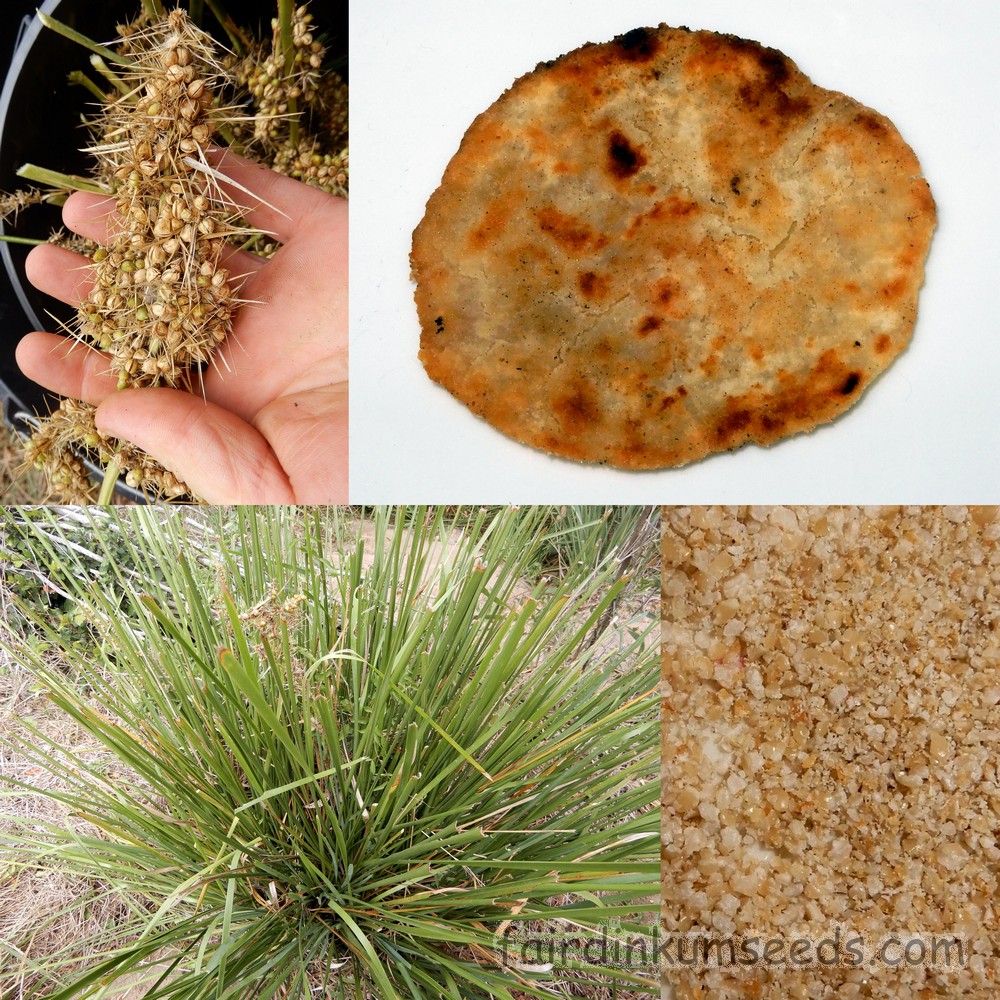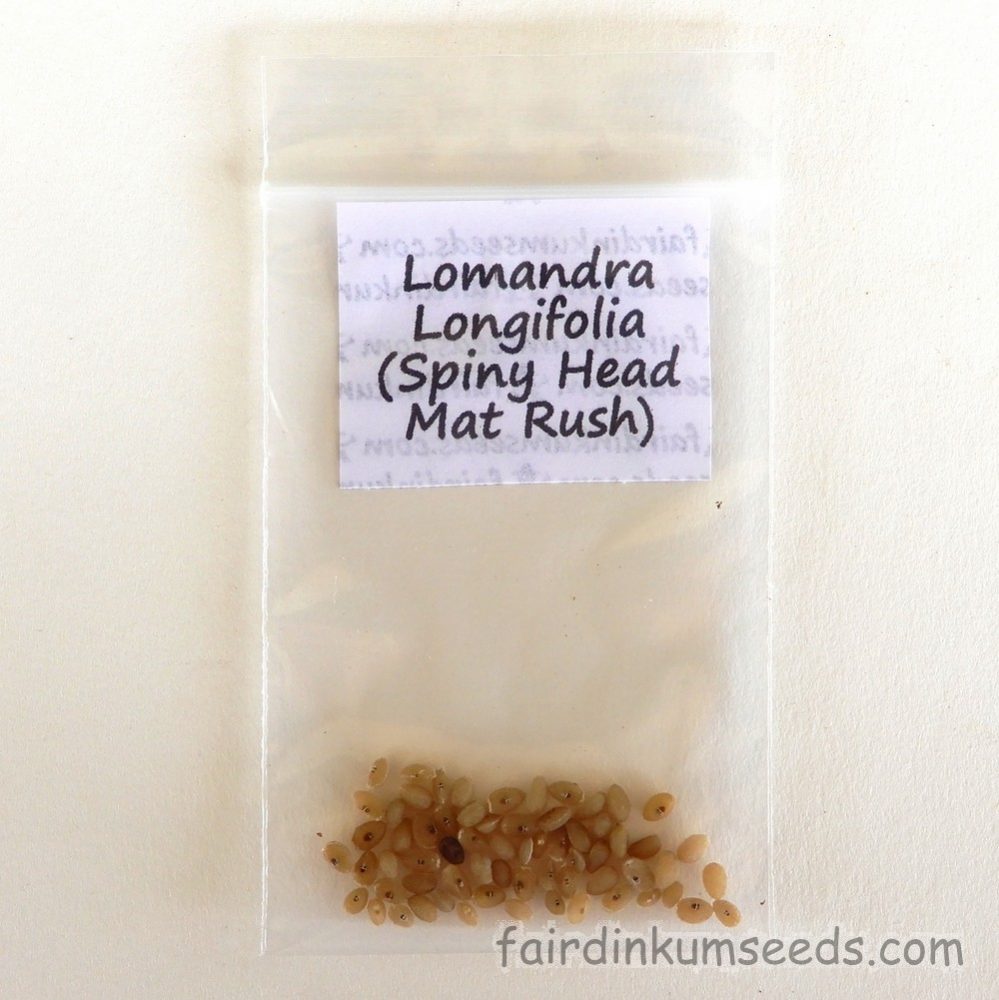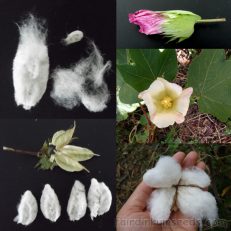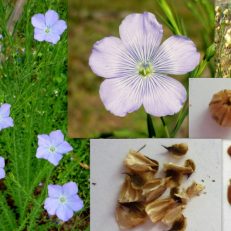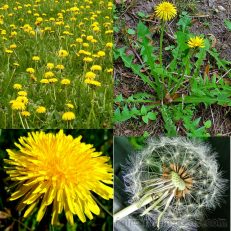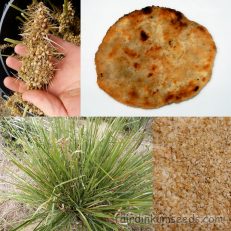Please read text!
Lomandra Longifolia Spiny Head Mat Rush Seeds
Packet of 50+ wild harvested seeds!
This local bushtucker and ornamental species is very popular both here and overseas.
It is one of the most common drought tolerant roadside, footpath, and landscaping plants.
Large strap like leaves and unusual spiky looking seed clusters, and it produces large amounts of grain.
The reason it is so popular is that once established it is pretty much impossible to kill by accident.
It handles crazy summer heat of 45c+ and some selections are able to live down through temperatures as low as -10c.
Traditionally it was and still is used for weaving baskets, and that is how it gets it other name of basket grass.
The other way it was used was to make damper.
The seeds when husked look a lot like a yummy short fat angular Rice Seeds, and these very hard grains were pounded into flour, mixed with water and baked in the fire to make dense bread or cake.
I chucked a few in my flour mill and made up a couple small flat loaves and to my taste it’s a lot like Corn meal, just a lighter tan colour instead of bright yellow.
The only issue was that like corn meal, it lacks the stickiness of conventional bread dough making it a bit hard to form cakes.
Fried as flat breads was better when using 100% Lomandra but even then it was quite crumbly.
But, mixed 50/50 with normal wheat flour was heaps better!
That made a really nice fried flat bread and with yeast added it made a light damper that still had the grainy texture and the mild nutty flavour of Lomandra seeds.
Big improvement!
I could even see it for sale in fancy gourmet city cafes and bakeries.
You heard it hear first folks….
Anyway, I though it could maybe be boiled like rice as it looks just like it, but it’s massive density meant that 1hour later, it was still rock hard.
I tried again with a new batch and then even after 4hours rapid boiling on the stove the grains were still rock hard, not having softened at all.
I decided it was time to crank it up a notch so I soaked them in water for 24hrs first, then boiled in the pressure cooker for 3hrs, still like little stones!
I reckon a hammer mill to first crack the grain and open up the cells to moisture, then boiling the same way “Quick cooking oats” is done would be worth a thought, but unfortunately I don’t have a hammer mill and even if I did by then I was running low on grain.
Maybe a soak in vinegar or lemon juice might help break it down and soften it too, but yeah, have to try it at a later date as I was running out of grain.
The flour was good, but this is the first year I’ve tried it.
Next year its definitely on the list of wild foods to do a lot more experimentation with.
The plants need zero inputs, yet produce massive grain yields that have been utilized for thousands of years, surely that is worthy of further experimentation?
The leaf bases can be chewed for a little starch sugar and moisture and when out wandering around the scrub on a hot Summers day, miles from water, it can make a really big difference to your energy levels.
Anyway, the main appeal of this fella is visual as an ornamental, and to that end its a great choice.
It grows easily in all parts of Australia, in all soil types and conditions.
Handles drought, flooding, frost, sand, rock, clay, even bounces back after burning off.
Germination is straight forward but there is a bit of a method to it.
Because of the incredibly hard seeds it is best to boil the kettle first.
Then put the seeds in a cup.
Fill the cup ¾ with cold tap water.
Fill up the rest with hot kettle water and leave them to soak for 24-48hrs.
Plant the seeds very shallowly right on the surface of a sandy soil mix.
Once watered in the first time it is very important to not smash them around next time you water as they are very delicate initially sending out a tiny thin root that is easily snapped and damaged.
Once they get leaves they are fine and they are pretty much invincible at about the 10th leaf stage.
Germination is ~4weeks here for me, but folks in the know say sometimes they can occasionally have a longer dormancy and germinate up to 6months from the time of planting.
Could be temperature, not really sure as like I say, not very experienced with this fella.
That will definitely change over time!
Wildharvested by me and the Mrs organically, no chems, no nasties, no problems!!!
